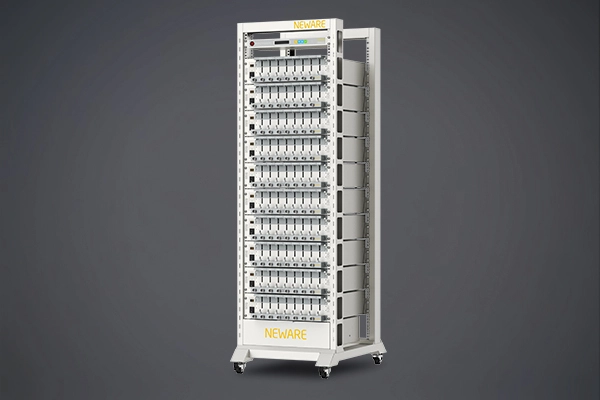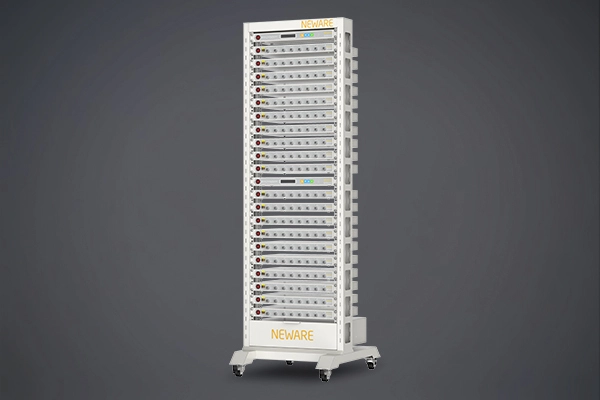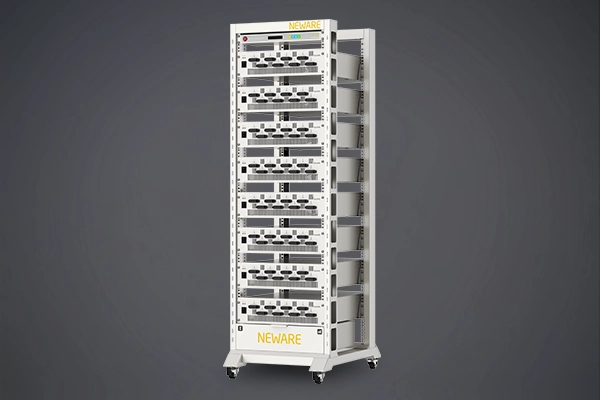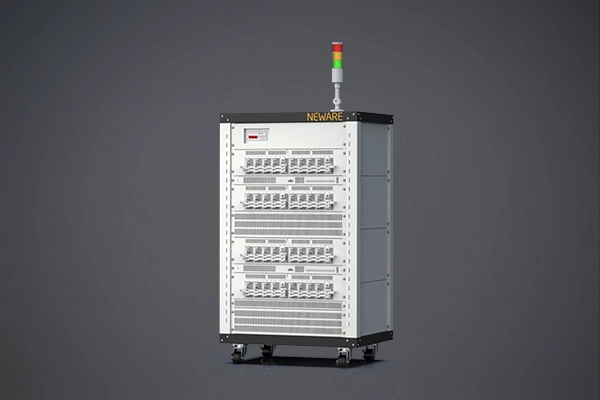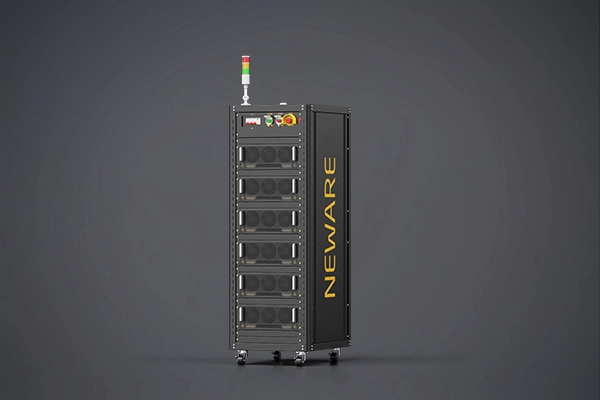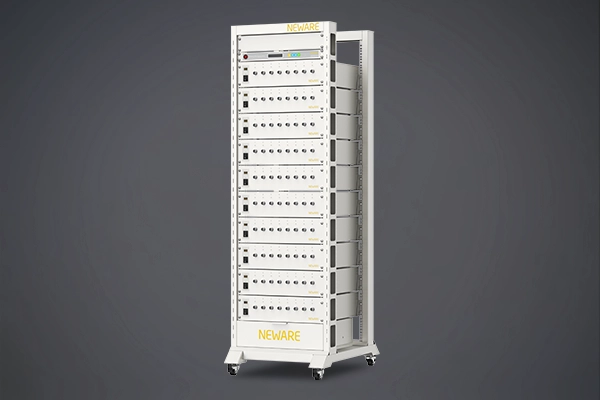Lithium Iron Phosphate (LiFePO₄ or LFP) batteries are a type of lithium-ion battery that uses lithium iron phosphate as the cathode material and graphite as the anode. Known for their high safety, long cycle life, and thermal stability, LFP batteries have become increasingly popular in the electric vehicle (EV) industry. They offer a lower energy density compared to other lithium-ion chemistries, such as Nickel Manganese Cobalt (NMC) or Nickel Cobalt Aluminum (NCA), but their enhanced safety profile and longer lifespan make them particularly attractive for certain applications.
In the automotive sector, LFP batteries are extensively used by leading EV manufacturers like Tesla and BYD. Tesla, for instance, has integrated LFP batteries in its standard range Model 3 and Model Y vehicles. This strategic move allows Tesla to offer a more affordable option while ensuring safety and longevity, especially appealing in markets with less developed charging infrastructure. The use of LFP batteries helps Tesla mitigate the risks associated with battery thermal runaway and provides a more stable performance over time.
BYD, a major Chinese automaker and battery producer, has been a pioneer in adopting LFP technology. BYD's Blade Battery, an advanced form of LFP battery, is designed to optimize safety and efficiency. This battery is used in several of BYD's electric vehicles, including the Tang and Han models. The Blade Battery’s innovative design significantly enhances the safety standards, reducing the risk of fire even under extreme conditions.
As of recent market analyses, LFP batteries are gaining a significant share in the EV market, particularly in China. According to reports, LFP batteries accounted for around 50% of the Chinese EV battery market in 2023, driven by their cost-effectiveness and safety advantages. Globally, the adoption of LFP batteries is also rising, with projections indicating they could capture a substantial portion of the market as more manufacturers prioritize safety and sustainability over sheer energy density.
Overall, LFP batteries are becoming a cornerstone in the EV industry due to their balance of safety, longevity, and cost, with major players like Tesla and BYD leading the way in their integration and market expansion.
-High safety performance: LiFePO4 batteries excel in safety. The chemical stability of their cathode materials makes them less prone to explosion under impact, such as punctures. Moreover, they are less likely to catch fire or explode even when overcharged, significantly enhancing safety in use.
-Excellent cycle life: These batteries have an outstanding cycle life, enduring many charge-discharge cycles without performance degradation. Test data indicate that LiFePO4 batteries can achieve a cycle life of over 2000 cycles, giving them an advantage in applications requiring long-term use and frequent charging and discharging.
-Good high-Temperature Performance: LiFePO4 batteries perform well in high-temperature environments. They can operate over a broad temperature range, typically functioning normally from -20°C to 70°C. This makes them more reliable for use in high-temperature regions or applications that require a high-temperature operating environment.
-High tap density: LiFePO4 batteries have a high tap density, meaning they can provide greater battery capacity under the same volume or weight conditions. This gives them an advantage in applications requiring high energy density, offering longer usage time.
-Rapid charging capability: LiFePO4 batteries have good rapid charging capabilities. They can achieve high charge rates, typically supporting fast charging at rates from 1C to 5C. This means that LiFePO4 batteries can complete the charging process more quickly within the same amount of time, greatly reducing charging time and improving efficiency.

-Energy storage: They are extensively used in renewable energy systems such as solar and wind power as energy storage devices, leveraging their high cycle life and stability to store and release substantial amounts of electrical energy.
-Specialized equipment: Known for their high safety and stability, LiFePO4 batteries are an ideal power solution for specialized equipment like fire-fighting, security, and military devices, providing reliable power support while reducing safety risks such as fire and explosion.
-Robotics and AGVs: These batteries are widely used in automated equipment like robots and Automated Guided Vehicles (AGVs), which require high energy density, long cycle life, and fast charging capabilities that LiFePO4 batteries can meet, offering stable and reliable power support.
-Rail transportation: They are applied in rail transportation systems, including electric vehicles, electric bicycles, and electric motorcycles, offering high energy density and long cycle life for reliable power support, especially under high-temperature conditions.
-Medical equipment: LiFePO4 batteries are extensively used in medical equipment, such as portable medical devices, handheld medical instruments, and medical ambulances, which require long usage times and high safety; these batteries meet these requirements while providing stable power supply.
-Emergency backup: Widely used in emergency backup power, such as UPS (Uninterruptible Power Supply) systems, emergency lighting, and safety equipment, ensuring normal operation of equipment during power outages or emergencies.
-Power communication: LiFePO4 batteries are used in power communication systems, including base station backup power, power monitoring equipment, and smart grids, offering stable and enduring power supply with their high energy density, long cycle life, and high-temperature resistance.

As shown in the diagram, on the left is the olivine-structured LiFePO4 which serves as the cathode of the battery, connected to the positive terminal with an aluminum foil. In the middle is a polymer separator that insulates the cathode from the anode, allowing lithium ions (Li+) to pass through but not electrons (e-). On the right is the anode made of carbon (graphite), connected to the negative terminal with a copper foil.
During charging, lithium ions (Li+) from the cathode of the LiFePO4 battery migrate through the polymer separator towards the anode. During discharge, lithium ions (Li+) from the anode migrate back through the separator towards the cathode. Lithium-ion batteries are named for the shuttling of lithium ions during the charge and discharge process.

LiFePO4 batteries are renowned for their excellent safety performance. This is primarily attributed to the stability of the positive electrode material and the implementation of robust safety measures. LiFePO4 battery packs have undergone extensive testing to ensure their safety, and they have proven to be highly resistant to explosions, even under extreme impact scenarios.
The stability of the positive electrode material in LiFePO4 batteries significantly contributes to their safety. This material has inherent thermal and chemical stability, minimizing the risk of thermal runaway or other hazardous reactions. Additionally, the battery pack incorporates advanced safety designs, including protective circuitry and mechanisms to prevent overcharging, over-discharging, and short circuits. LiFePO4 battery packs have undergone stringent safety testing to meet industry standards and regulations. These tests evaluate their performance under various conditions, including extreme temperatures, vibrations, and mechanical stress. The results have consistently demonstrated the battery's ability to maintain its structural integrity and prevent the release of hazardous substances or the occurrence of thermal events. Even in situations involving severe collisions or accidents, LiFePO4 batteries have proven their exceptional safety record. Their robust construction and protective measures ensure that the battery remains stable and does not pose a risk of explosion or fire. This makes LiFePO4 batteries a reliable and secure choice for applications where safety is paramount.
LiFePO4 batteries boast an exceptional cycle life, making them highly desirable for various applications. At a 1C rate, which indicates a charging or discharging current equal to the battery's capacity, LiFePO4 batteries commonly achieve around 2000 cycles. However, their longevity doesn't stop there, as some LiFePO4 batteries have demonstrated cycle lives exceeding 3500 cycles.
In particular, the energy storage market places rigorous demands on battery performance, requiring cycle lives of 4000-5000 cycles or more. LiFePO4 batteries excel in meeting these requirements, surpassing other lithium battery types in terms of durability and longevity. The ability to endure such an extensive number of charge and discharge cycles ensures that LiFePO4 batteries can provide reliable and sustained power over an extended period. The impressive cycle life of LiFePO4 batteries can be attributed to several factors. The inherent stability and structural robustness of the LiFePO4 material contribute to the battery's longevity. This material exhibits excellent structural integrity, allowing it to withstand repeated cycles without significant degradation. Additionally, the battery's design and construction, including electrode composition and cell architecture, contribute to its extended cycle life. The extended cycle life of LiFePO4 batteries brings numerous benefits to various applications. In electric vehicles, it enables prolonged driving ranges and reduced battery replacement frequency. For renewable energy storage systems, it ensures reliable power supply over an extended period, supporting smooth energy management and enhancing system efficiency.
LiFePO4 batteries are highly regarded for their outstanding performance in high-temperature conditions. They demonstrate remarkable thermal stability and can endure peak temperatures ranging from 350 to 500°C. This ability to withstand high thermal loads ensures the safe and reliable operation of LiFePO4 batteries in environments subject to elevated temperatures.
Moreover, LiFePO4 batteries have an extended operating temperature range, spanning from -20 to +75°C. This wide temperature tolerance allows them to function optimally in diverse climatic conditions, from extreme cold to hot environments. Unlike some other battery chemistries that experience performance degradation or reduced capacity at low or high temperatures, LiFePO4 batteries maintain their efficiency and reliability across this broad temperature spectrum. Even under high-temperature conditions, such as 60°C, LiFePO4 batteries exhibit remarkable capabilities. They can still deliver their full capacity without any significant loss, ensuring consistent and reliable power output. This feature is particularly crucial in applications where temperature fluctuations or high operating temperatures are common, such as electric vehicles, renewable energy systems, or industrial settings. The impressive high-temperature performance of LiFePO4 batteries stems from their inherent thermal stability and robust design. The LiFePO4 material itself is highly resistant to thermal degradation, minimizing the risk of thermal runaway or performance deterioration at elevated temperatures. Additionally, the battery's advanced thermal management systems and design considerations further contribute to its ability to maintain optimal performance in high-temperature conditions.
LiFePO4 batteries are known for their impressive fast charging capabilities. When paired with dedicated chargers designed to optimize their charging process, these batteries can be charged at a rapid rate. With a charging current of 1.5C, which indicates a current equal to 1.5 times the battery's capacity, LiFePO4 batteries can reach full charge in as little as 40 minutes. The ability to charge LiFePO4 batteries quickly is a significant advantage in various applications. It allows for reduced downtime and increases the overall efficiency of devices or systems that rely on these batteries. For electric vehicles, fast charging enables shorter charging stops during long trips, providing convenience to drivers and minimizing charging time. In energy storage systems, it allows for rapid replenishment of stored energy, ensuring a reliable power supply during periods of high demand or when renewable energy sources are intermittent.
The fast charging capability of LiFePO4 batteries is made possible by their unique chemistry and design. The LiFePO4 material exhibits excellent electrochemical properties that facilitate efficient and rapid charge acceptance. Additionally, dedicated chargers are designed to provide the optimal charging parameters and protocols specifically tailored for LiFePO4 batteries, ensuring safe and efficient charging within a short timeframe.
LiFePO4 batteries are recognized for their environmentally friendly nature, making them a sustainable choice for various applications. These batteries are non-toxic and do not contain harmful substances such as lead, cadmium, or mercury, which are commonly found in other battery chemistries. As a result, LiFePO4 batteries pose minimal risks to human health and the environment throughout their lifecycle. Furthermore, LiFePO4 batteries are designed to be non-polluting. They do not release hazardous gases or volatile organic compounds (VOCs) during operation or charging. This characteristic ensures that LiFePO4 batteries have a minimal environmental impact, especially when compared to traditional lead-acid batteries or other types of lithium batteries that may require additional safety measures for containment or disposal of toxic materials. An additional advantage of LiFePO4 batteries is their use of widely available raw materials. The main components of LiFePO4 batteries, such as iron, phosphate, lithium, and carbon, can be sourced from abundant and easily accessible natural resources. This availability contributes to the cost-effectiveness of LiFePO4 batteries, making them a competitive and economically viable energy storage solution. LiFePO4 batteries align with the principles of sustainability and environmental protection. Their non-toxic and non-polluting nature, coupled with the use of widely available raw materials, reflects their commitment to minimizing their ecological footprint. As the demand for clean energy solutions continues to grow, LiFePO4 batteries offer a green and environmentally conscious option for applications ranging from electric vehicles to renewable energy storage systems.
Lower energy density: Compared to some other lithium-ion battery chemistries, LiFePO4 batteries have a lower energy density. This means they can store less energy per unit of volume or weight, resulting in a relatively larger and heavier battery pack for the same energy capacity. This limitation may be a factor in applications where compact size and lightweight design are crucial.
Limited high-rate discharge capability: LiFePO4 batteries may have limitations when it comes to high-rate discharge. While they can deliver a stable and consistent discharge over a long period, their ability to provide high bursts of power or handle rapid discharge rates may be relatively lower compared to some other lithium-ion chemistries. This characteristic may impact applications that require frequent or intense power demands.
Higher cost: LiFePO4 batteries tend to have a higher upfront cost compared to other lithium-ion chemistries. The materials used in LiFePO4 batteries, such as iron, are more abundant and less expensive than materials used in other lithium-ion chemistries, but the manufacturing processes and technologies involved in producing LiFePO4 batteries can increase their overall cost. However, it's worth noting that the cost of LiFePO4 batteries has been decreasing over time as technology advances and economies of scale are realized.
Lower operating voltage: LiFePO4 batteries have a lower nominal voltage of 3.2V, which is lower than the 3.6V nominal voltage of most traditional lithium-ion batteries. This lower voltage may require additional circuitry or adaptations when used in devices or systems designed for higher voltage lithium-ion batteries.
Despite these disadvantages, LiFePO4 batteries remain a popular choice for various applications due to their excellent safety, long cycle life, thermal stability, and environmental friendliness. The decision to use LiFePO4 batteries should consider the specific requirements and priorities of the intended application.
The nominal voltage of a single LiFePO4 battery cell is 3.2V, with a charging voltage of 3.6V and a discharge cutoff voltage of 2.0V. LiFePO4 battery packs achieve the required voltage for devices by connecting multiple cells in series. The pack voltage is determined by the number of cells in series, denoted as N. Common LiFePO4 battery pack voltages include:
12V LiFePO4 battery
24V LiFePO4 battery
36V LiFePO4 battery
48V LiFePO4 battery
The capacity of a LiFePO4 battery pack is determined by the combination of parallel-connected cells' capacity and quantity. It is usually determined based on the specific requirements of the electrical device. The more LiFePO4 cells are connected in parallel, the larger the capacity. Common LiFePO4 battery pack capacities include 10Ah, 20Ah, 40Ah, 50Ah, 100Ah, 200Ah, 400Ah, and so on.
In LiFePO4 batteries, the voltage and capacity options can be customized to meet the specific needs of different applications. These batteries provide flexibility and reliability, making them suitable for a wide range of industries, including electric vehicles, renewable energy storage, and portable electronic devices.
It is recommended to charge LiFePO4 battery packs using the CC-CV (Constant Current-Constant Voltage) charging method. The charging process begins with a constant current (CC) phase, with a suggested current of 0.3C. Afterward, it transitions to a constant voltage (CV) phase, where the recommended voltage is 3.65V.
Both LiFePO4 and Li-ion batteries are charged using the CC-CV charging method, starting with a constant current and transitioning to a constant voltage. However, the CV point differs between the two types:
The nominal voltage for LiFePO4 batteries is 3.2V, and the charging cutoff voltage is 3.6V.
The nominal voltage for regular Li-ion batteries is 3.6V, and the charging cutoff voltage is 4.2V.
Solar panels cannot directly charge LiFePO4 batteries due to the unstable voltage output of solar panels. To charge LiFePO4 batteries, a voltage stabilization circuit is required, along with a corresponding LiFePO4 battery charging circuit.
Generators cannot directly charge LiFePO4 batteries because the electricity generated by generators is typically alternating current (AC) or pulsed direct current (DC). Charging LiFePO4 batteries necessitates stable direct current (DC) voltage.

Lithium Iron Phosphate (LiFePO4) batteries and lithium-ion batteries are two common types of rechargeable battery technologies. In terms of energy density, lithium-ion batteries typically have a higher energy density, making them more favored in many applications as they can provide longer usage times. However, LiFePO4 batteries excel in safety due to their chemical stability and lower risk of thermal runaway. Additionally, LiFePO4 batteries have a longer cycle life, being able to withstand more charge-discharge cycles without performance degradation. Lithium-ion batteries, on the other hand, may be limited in cycle life and require more frequent replacement. Another important factor is charging speed; lithium-ion batteries usually have faster charging speeds, which is very beneficial for applications that require quick charging. However, LiFePO4 batteries perform more stably in high-temperature environments, making them more reliable for applications under such conditions. In summary, LiFePO4 batteries and lithium-ion batteries have different characteristics in aspects such as energy density, safety, cycle life, charging speed, and temperature stability, and are suitable for different application needs.
-Charging and discharging: When selecting a charger for LiFePO4 batteries, it is advisable to use a charger equipped with a proper charge termination mechanism to avoid overcharging and shorten the battery's lifespan. Generally, slow charging is preferable to fast charging as it can extend the battery's cycle life.
-Depth of discharge: The depth of discharge (DOD) is a significant factor affecting the lifespan of LiFePO4 batteries. The higher the depth of discharge, the shorter the battery's lifespan. In other words, reducing the depth of discharge can significantly prolong the battery's cycle life. Therefore, it is recommended to avoid discharging LiFePO4 batteries to extremely low voltages, especially in UPS applications.
-Operating environment: Prolonged exposure to high temperatures can lead to electrode degradation and reduce the lifespan of LiFePO4 batteries. Therefore, maintaining an appropriate operating temperature is a good method to extend the lifespan of LiFePO4 batteries.
Retired LiFePO4 batteries that do not have value for further use and LiFePO4 batteries after multiple cycles are eventually subjected to dismantling and recycling. Unlike ternary material batteries, LiFePO4 batteries do not contain heavy metals. The main components targeted for recycling are Li, P, and Fe. However, the added value of the recycling products is relatively low, so it requires the development of low-cost recycling processes. There are primarily two recycling methods: pyrometallurgical (pyro) and hydrometallurgical (wet) processes.

Traditional pyrometallurgical recycling involves high-temperature incineration of electrode sheets to burn off the carbon and organic materials. The remaining ash, which cannot be burned, is then screened to obtain fine powder containing metals and metal oxides.
Hydrometallurgical recycling mainly involves dissolving metal ions from LiFePO4 batteries using acid or alkaline solutions. The dissolved metal ions are further extracted in the form of oxides, salts, or through precipitation and adsorption processes. Common reagents used in the reaction process include H2SO4, NaOH, and H2O2.
NEWARE TECHNOLOGY LLC
755 Ames Avenue, Milpitas, CA, USA, 95035



